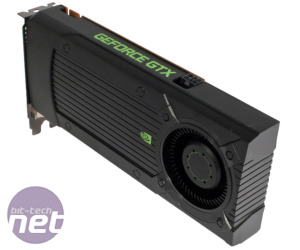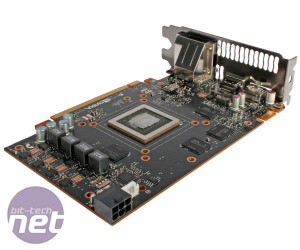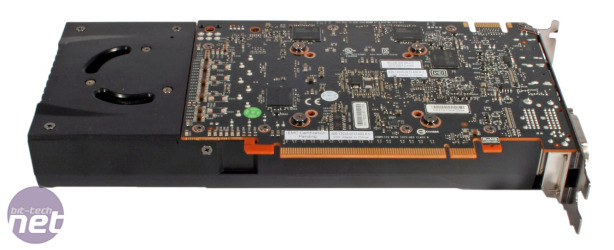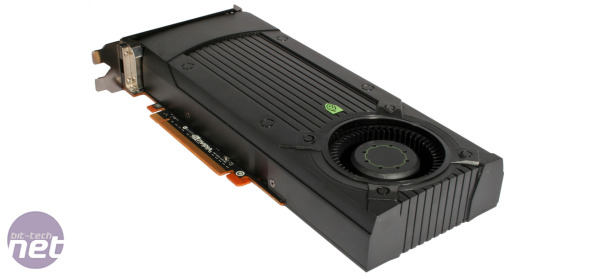
Performance Analysis
The GTX 650 Ti 2GB Boost gets off to a very good start, as in our 1,920 x 1,080 Battlefield 3 test it's 11fps quicker on the minimum frame rate than the GTX 650 Ti 1GB but just 6fps behind the GTX 660 2GB. Its minimum frame rate of 41fps results in smooth gameplay and leaves it 4fps ahead of the competing AMD Radeon HD 7850 2GB. It maintains a lead over AMD's card at 2,560 x 1,600, but only by 1fps. In this test, it isn't quite smooth enough to play at, so you'd want to dial the settings down a little, but it's a good result nonetheless for a card aimed at those playing on 1080p screens.The Boost card's ability to keep Crysis 3 playable at 1,920 x 1,080 with Very High settings (albeit only just and with anti-aliasing disabled) is impressive for a £140 card, as this game is a truly difficult beast to tame. Its minimum frame rate in this test is 3fps more than that of the HD 7850 2GB and even hot on the heels of the HD 7870 2GB, although Nvidia hardware does currently have an advantage in this game. As expected, the card is unable to produce playable frame rates in the demanding 2,560 x 1,600 test, but is still on par with the HD 7850 2GB.
The card performs favourably in Skyrim too, as at 1,920 x 1,080 it's 37 percent faster than the GTX 650 Ti 1GB, whereas the GTX 660 2GB has just a 15 percent lead over the GTX 650 Ti Boost 2GB. Its minimum frame rate is also marginally faster than the HD 7850 2GB here, this time by 2fps. At 2,560 x 1,600 the difference between 2GB and 1GB cards is very apparent, and is actually the difference between playable and unplayable frame rates. Nvidia's new card falls slightly behind the HD 7850 2GB in this scenario, but its average frame rate is a touch faster.
In The Witcher 2, the GTX 650 Ti Boost 2GB is very close to the HD 7850 2GB in performance but is still 1fps slower on the minimum frame rate. It does, however, have a 9fps lead over the GTX 650 Ti 1GB while being only 5fps slower than the GTX 660 2GB, which again shows that its performance is closer to the faster of the two Nvidia cards that it sits between. The Boost card takes the lead over the HD 7850 2GB at 2,560 x 1,600, and again is much closer to the GTX 660 2GB than the GTX 650 Ti 1GB.
In the Unigine benchmark, the GTX 650 Ti Boost 2GB is neck and neck with the HD 7850 2GB as there's less than a single percent difference between their scores. The GTX 660 2GB has a 16 percent lead over the new Nvidia card, which itself gets a whopping 45 percent higher score than the regular GTX 650 Ti 1GB. With an almost identical price tag and Unigine score as the HD 7850 2GB, the card comes out roughly equal to the AMD one in Unigine performance versus price chart, although this isn't designed to be the ultimate measure of bang for buck.
The power consumption of the new card turns out to be pretty big, as it's the highest of the cards on test in both idle and load conditions. The fact that it draws as much power as a GTX 660 2GB under load is a shame, but demonstrates just how similar the two cards really are. Also under load, the HD 7850 2GB draws 35W less than the Boost card. Thermal performance is also a bit disappointing, as the card's delta T result of 48°C under load is rather toasty compared to the competition, and noise levels were also a little intrusive in load conditions. It's important to remember that this is only a reference sample, and Nvidia's board partners will naturally come up with better cooling solutions.
Overclocking the GTX 650 Ti Boost 2GB brings it on par with the GTX 660 2GB in the 2,560 x 1,600 Battlefield 3 test, and consequently the card achieves frame rates that are just playable, which is a neat result for a distinctly mid-range card. We also see a 14 percent performance boost in Crysis 3, and finally in Unigine the overclocked card is 11 percent faster than stock settings, and the GTX 660 2GB's lead over it is reduced to just under 5 percent.
Conclusion
While the GTX 650 Ti Boost 2GB comes in at a performance slot in the middle of the GTX 650 Ti 1GB and GTX 660 2GB, its performance is actually markedly and consistently closer to the more powerful card. Not only that, but the GTX 650 Ti Boost 2GB tends to be better than, or at least as good as, its rival from the red team, the Radeon HD 7850 2GB. While the prices of these two cards are near identical, it's worth bearing in mind that AMD's Never Settle Reloaded bundle means the price of any HD 7850 2GB also includes copies of Tomb Raider and Bioshock: Infinite, while Nvidia's card comes with £50 worth of credit in its Free 2 Play bundle.When we originally reviewed the GTX 660 2GB, we found that its value for money was spot on with the market prices at the time. Unfortunately for the GTX 650 Ti Boost 2GB, prices for its more powerful stbalemate have recently tumbled to around the £150 mark, with some even retailing for a little less than this. The GTX 650 Ti Boost 2GB's relatively high temperatures and power draw are somewhat disconcerting especially as they aren't any better than those of the GTX 660 2GB.
While Nvidia's newest Kepler card is faster than its AMD price-point competition then, and would still make a great purchase for those looking to squeeze the most out of their games on a 1080p panel, its greatest enemy is Nvidia's own GTX 660 2GB at a now cut-down price. As pricing is near identical, there's truly no reason not to go for the more capable GTX 660 2GB models instead, as the extra grunt it has will make it the more sensible purchase in the long run.
**Since publication, we have slightly amended the article as the price of the HD 7850 2GB is closer to £140-£145 than £150, as was originally stated.**
-
Performance32 / 40
-
Features24 / 30
-
Value20 / 30


MSI MPG Velox 100R Chassis Review
October 14 2021 | 15:04












Want to comment? Please log in.